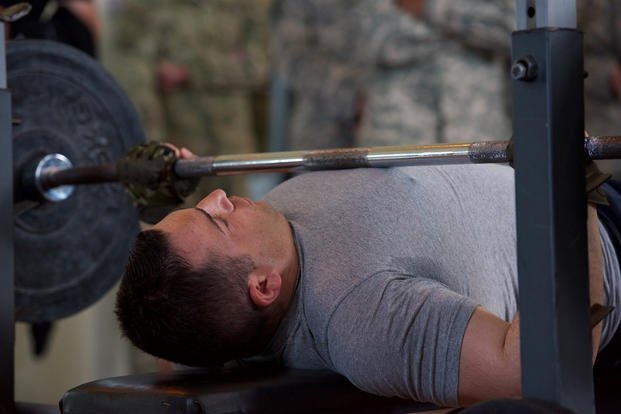Chances are, when it comes to how you've been taught to breathe during your weight training, you were advised to exhale throughout the concentric portion of an exercise. (This is the phase of the repetition when you are pushing or pulling the weight and contracting the muscles, such as pushing the weight up during the bench press.)
But what if I told you that doing the complete opposite of what you were taught to do in the gym could bring you up to 20% more strength instantly?
Do I have your attention?
Good. Let me demonstrate.
First, take a breath -- slightly more than normal but not extremely deep -- and hold it.
Now flex your muscles hard.
Feel the power in those arms?
Now do the exact same thing. Only this time, after you've started flexing, begin to exhale -- while maintaining your flex -- until the air is out of your lungs.
Did you feel how your strength began to disappear little by little as you exhaled?
Well, the same thing is happening to your strength as you're trying to thrust that barbell into the air.
By exhaling too soon, you're giving your muscles less stability and oxygen to perform the extra effort you're asking of them.
This means less strength, less muscle mass and an increased chance of injury.
On the other hand, when your breath is held, you create a very rigid torso, from hips to head, that gives your muscles something to "push" off of in order to lift heavier weights.
(It's kind of like the difference between doing push-ups on a cement floor versus a floor made of lime Jell-O.)
So let me explain the correct way to breathe for maximum strength and muscle gains without jeopardizing your safety.
Follow these four simple tips and turbocharge each rep.
1. Just before you begin the concentric portion of your repetition (in the bench press for example, it would be at the bottom position when the bar is at your chest), take a slightly more than normal breath.
(Note: Taking too extreme of a deep breath could create too much pressure. Your breath should feel "natural," yet deeper than normal.)
2. Now begin your "pushing" movement (or "pulling" for exercises such as lat pulldowns or cable rows) while holding your breath tight.
3. Once you've just passed the "sticking point" of the movement (this is the hardest part of the movement, usually about the first third to half of the way to a full contraction), breathe out slowly through your teeth.
You should have exhaled fully exactly at the point of full contraction (for example, the "up" position if performing a bench press).
4. Finally, inhale again slowly as you return to the start position.
This may take a bit of practice, but you should find that your body is already pre-programmed to operate this way if you let it.
Everyone who knows me through my Optimum Anabolics Program understands how big a fan I am of listening to your body in order to let it tell you how to build muscle.
Well, your body knows it needs a stable core to push off of to create maximal force.
Listen carefully to it while using the above procedure, and you're sure to see new gains.
More from Anderson at:
Jeff Anderson is a 10-year veteran of the U.S. Army, a master instructor of close quarters combat self-defense and president of the International Society of Close Quarter Combatants. A full-time, self-defense author and instructor, Anderson has trained military, law enforcement and civilians in advanced close quarter combat tactics for "real-life" self-defense.
Want to Learn More About Military Life?
Whether you're thinking of joining the military, looking for fitness and basic training tips, or keeping up with military life and benefits, Military.com has you covered. Subscribe to Military.com to have military news, updates and resources delivered directly to your inbox.


















